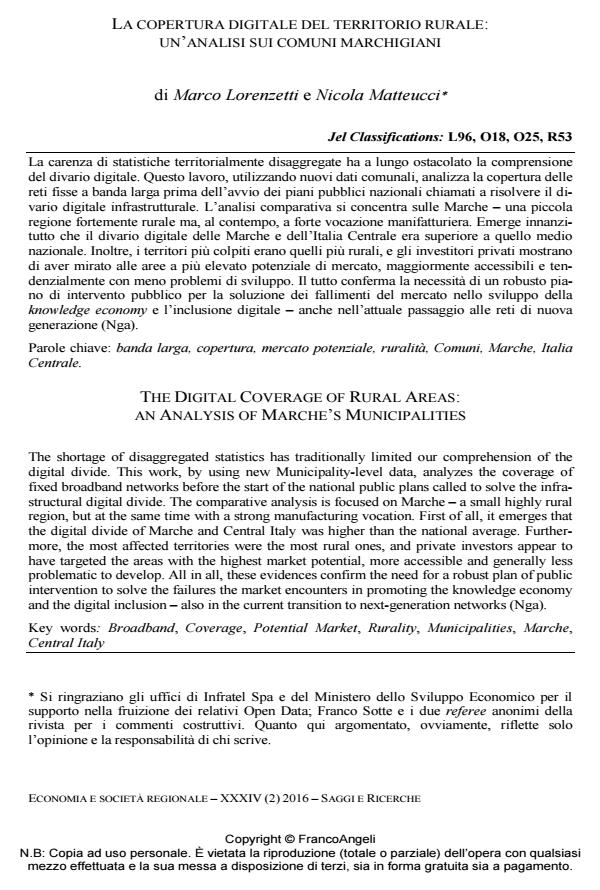The digital coverage of rural areas: an analysis of marche’s municipalities
Journal title ECONOMIA E SOCIETÀ REGIONALE
Author/s Marco Lorenzetti, Nicola Matteucci
Publishing Year 2016 Issue 2016/2
Language Italian Pages 21 P. 92-112 File size 410 KB
DOI 10.3280/ES2016-002007
DOI is like a bar code for intellectual property: to have more infomation
click here
Below, you can see the article first page
If you want to buy this article in PDF format, you can do it, following the instructions to buy download credits

FrancoAngeli is member of Publishers International Linking Association, Inc (PILA), a not-for-profit association which run the CrossRef service enabling links to and from online scholarly content.
The shortage of disaggregated statistics has traditionally limited our comprehension of the digital divide. This work, by using new Municipality-level data, analyzes the coverage of fixed broadband networks before the start of the national public plans called to solve the infrastructural digital divide. The comparative analysis is focused on Marche - a small highly rural region, but at the same time with a strong manufacturing vocation. First of all, it emerges that the digital divide of Marche and Central Italy was higher than the national average. Furthermore, the most affected territories were the most rural ones, and private investors appear to have targeted the areas with the highest market potential, more accessible and generally less problematic to develop. All in all, these evidences confirm the need for a robust plan of public intervention to solve the failures the market encounters in promoting the knowledge economy and the digital inclusion - also in the current transition to next-generation networks (Nga).
Keywords: Broadband, Coverage, Potential Market, Rurality, Municipalities, Marche, Central Italy
- Sviluppo socio-economico e dotazione di banda larga nei comuni marchigiani Marco Lorenzetti, Nicola Matteucci, in PRISMA Economia - Società - Lavoro 3/2018 pp.199
DOI: 10.3280/PRI2016-003014
Marco Lorenzetti, Nicola Matteucci, La copertura digitale del territorio rurale: un’analisi sui comuni marchigiani in "ECONOMIA E SOCIETÀ REGIONALE " 2/2016, pp 92-112, DOI: 10.3280/ES2016-002007